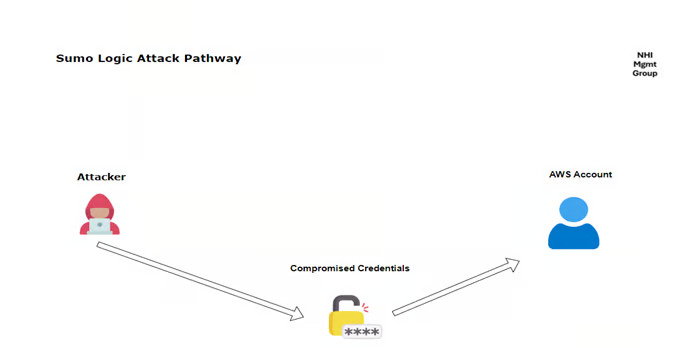In the digital era, even security-focused organizations like Sumo Logic aren’t immune to evolving cyber threats. On November 3, 2023, Sumo Logic detected unauthorized access to one of its AWS accounts. Investigations revealed that the attackers used compromised credentials to gain access to the AWS account. The company quickly identified the intrusion and rotated all potentially compromised credentials to prevent any further exploitation.
What Happened?
The incident came to light when Sumo Logic’s internal systems detected unauthorized access to one of its AWS accounts. It was soon confirmed that attackers had used compromised credentials to access the system.
While the exact origin of the compromised credentials remains unclear, quick actions were taken to secure the affected account. This included immediately isolating the compromised resources, rotating all potentially exposed credentials, and initiating a thorough investigation.

Who Was Affected?
Fortunately, Sumo Logic reported no evidence of customer data exposure. However, as a precautionary measure, the company advised all customers to rotate their API keys to minimize any lingering risk.
Sumo Logic’s Response
Following the breach, Sumo Logic implemented the following measures to mitigate risks and prevent future incidents:
- Credential Rotation: All impacted credentials, including API keys and user passwords, were reset.
- Enhanced Security Monitoring: Additional controls were introduced to detect unauthorized access and suspicious activities.
- Customer Notifications: Customers were encouraged to rotate their own secrets and evaluate their configurations to reduce potential secondary risks.
Lessons Learned
Secrets Management
- Use secret management tools to securely store secrets and automatically rotate them.
- Avoid hardcoding credentials into source code repositories, and regularly audit for exposed secrets.
Adopt Zero-Trust Policies
- Implement granular access controls and enforce the principle of least privilege to limit the damage caused by compromised credentials.
- Regularly review and update permissions for users, applications, and services.
Enhance Cloud Monitoring
- Use advanced tools like AWS GuardDuty or third-party monitoring platforms to detect anomalies in cloud activity.
- Ensure that logs are actively monitored and analyzed for suspicious behavior.
Training and Awareness
- Train teams on secure coding practices, including the dangers of storing secrets in code.
Use CNAPP Solutions
- Cloud Native Application Protection Platform (CNAPP) is a security and compliance solutions that helps teams build, deploy and run secure cloud applications in automated, dynamic public cloud environments. It also helps security teams to collaborate more effectively with Developers and DevOps Engineers.
Conclusion
The Sumo Logic breach highlights the serious risks associated with mishandled credentials in cloud environments. While the company’s quick response mitigated the potential impact, the incident highlights the need for organizations to take proactive steps toward security.
Cloud-native companies must prioritize robust credential management, adopt zero-trust principles, and continuously audit their environments for vulnerabilities. By learning from this breach and implementing stronger security practices, organizations can better defend themselves against the evolving threats of the digital landscape.
